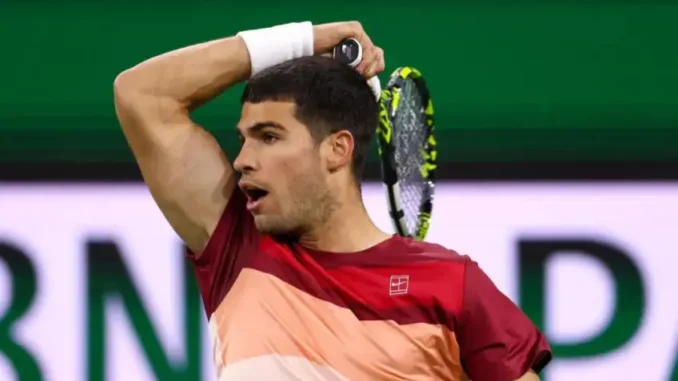
As the tennis world turns its gaze toward the red clay courts of spring, Carlos Alcaraz, the electrifying Spanish prodigy, is gearing up for a transformative 2025 season. Known for his explosive athleticism and fearless shot-making, the 21-year-old reigning Roland Garros champion has made a bold move that’s sending ripples through the sport: he’s shaking up his schedule in a way that promises to redefine his approach to the clay court swing. With the absence of Rafael Nadal, the undisputed king of clay, Alcaraz stands poised to cement his legacy on the surface where he’s already claimed eight of his 16 career titles. But this year, he’s not just relying on past success—he’s rewriting the playbook.
For years, Alcaraz has been a fixture on the South American clay circuit, dazzling fans in Buenos Aires and Rio de Janeiro with his relentless energy and flair. These early-season tournaments, part of the so-called “Golden Swing,” offered him a chance to hone his craft on the terre battue before the European clay season kicked into high gear. In 2022, he stormed to the Rio title, and his dominance on the surface has only grown since, culminating in last year’s triumphant French Open run, where he outlasted Alexander Zverev in a grueling five-set final. Yet, in a surprising twist, Alcaraz has decided to bid farewell to these South American stops in 2025, opting instead to recalibrate his focus and preparation for the challenges ahead.
The decision reflects a strategic pivot, one driven by a desire to optimize his performance on the biggest stages. After a 2024 season that saw him soar to new heights—capturing both Roland Garros and Wimbledon, along with a silver medal at the Paris Olympics—Alcaraz finished the year ranked No. 3, nearly 5,000 points behind the relentless Jannik Sinner. The Spaniard’s camp has hinted that this schedule shake-up is about building consistency, a quality he’ll need to reclaim the top spot. “We knew we had to change things,” Alcaraz recently remarked, reflecting on his offseason adjustments. Instead of kicking off his clay campaign in February across the Atlantic, he’s chosen to conserve energy and sharpen his game closer to home, setting his sights on the European clay swing that begins in earnest with the Monte Carlo Masters in April.
This isn’t the only change in Alcaraz’s arsenal. During his preseason training at the Ferrero Tennis Academy in Villena and the Club de Campo de Murcia, he’s been fine-tuning his equipment and technique. His team, led by longtime coach Juan Carlos Ferrero and newcomer Samuel Lopez, has added five grams of weight to the neck of his Babolat Pure Aero racket, a tweak designed to unleash even more power in his already devastating forehand. “It’s an extra help in the stroke,” Lopez explained, noting how the added heft enhances the ball’s weight and spin, giving Alcaraz an edge in rallies. He’s also overhauled his serve—a shot that faltered 105 times last season with 119 double faults—making it smoother and more fluid to boost its reliability under pressure.
Alcaraz’s clay court journey in 2025 will kick off with Monte Carlo, a tournament where he’s yet to find his footing, followed by a return to the Barcelona Open, where he’s a two-time champion. From there, it’s on to the Madrid Open, another event he’s conquered twice, and the Italian Open in Rome, where he’s still chasing a deep run. The ultimate prize, of course, is Roland Garros, where he’ll defend his title against a field hungry to dethrone him. With Nadal sidelined, the clay crown is up for grabs, and Alcaraz knows the likes of Sinner, Zverev, and dark horses like Stefanos Tsitsipas and Holger Rune will be gunning for it. “To always be at the top, you have to keep adapting,” he said, a mantra that underscores his willingness to evolve.
The shift away from South America has left some fans disappointed—Alexander Zverev will step in to headline Buenos Aires and Rio—but it’s a calculated risk for a player with grand ambitions. Alcaraz isn’t just aiming to win titles; he’s chasing history. A victory at the Australian Open in January could make him the youngest man to complete the Career Grand Slam, and a dominant clay season would solidify his status as Nadal’s heir apparent. As he prepares to slide and grind on the red dirt once more, the tennis world watches with bated breath, eager to see if this huge change will propel Carlitos to even greater heights.
Leave a Reply